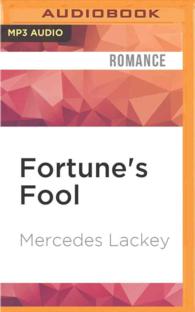- ホーム
- > 洋書
- > 英文書
- > Literary Criticism
Full Description
Women's writing was a crucial part of the history of sexuality in the Romantic period, yet has not often been seen as part of that history. This collection shows how women writers fit into a tradition of Romanticism that recognizes transgressive sexuality as a defining feature. Building on recent research on the period's sexual culture, it shows how women writers were theorizing perversions in their literary work and often leading transgressive sexual lives. In doing so, the collection also challenges current understandings of 'transgression' as a sexual category.
Contents
Notes on Contributors
Editors' Acknowledgments
1. Introduction, David Sigler
2. Feminising Romantic Sexuality, Perverting Feminine Romanticism, Kathryn Ready
3. Reorienting Multi-Dimensional Sex with Objects in Millenium Hall, Kate Singer
4. The Necrophilia of Wollstonecraft's 'The Cave of Fancy', David Sigler
5. Sexual Violence, Sexual Transgression and the Law in Mary Hays's The Victim of Prejudice, Kathleen Emily Hurlock
6. 'Thoughts that Breathe and Words that Burn': Barbauld, Masturbation and the Novel, Kathryn Ready
7. Resistive Embodiment and Incestuous Desire in Mary Shelley's Mathilda, Crystal Veronie
8. 'Our Dire Transgression': Mary Diana Dods in the Biblical Sense, Colin Carman
9. George Sand, Indiana and the Transgressive Work of Idealism, Richard C. Sha
10. Emily Brontë's Shelleyan Poetics of Sexual Ambivalence, Amanda Blake Davis
11. Primroses in the Porridge: Hareton Earnshaw's Transgression against his Homosocial Family in Wuthering Heights, Chantel Lavoie
Index
Index






